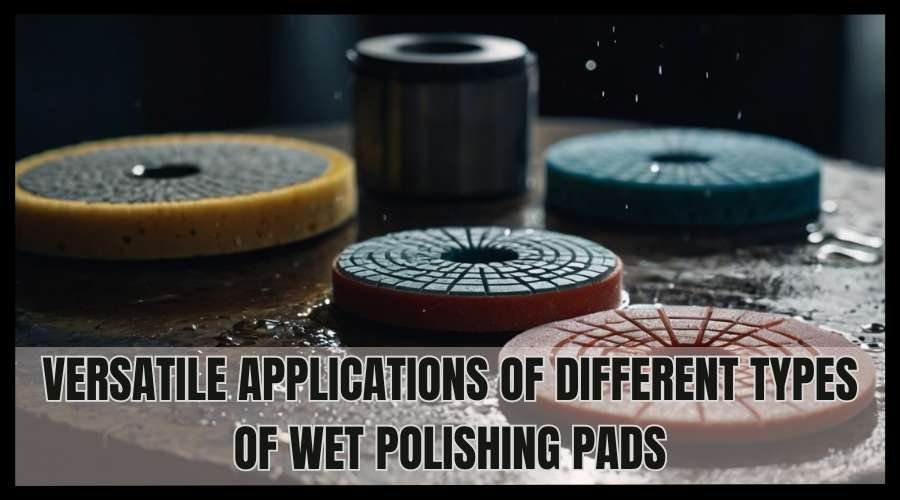
Sep 13,2024
The term “polishing pad” mainly relates to machine polishing pads, of which foam polishing pads are most popular for paint correction and enhancement. Nevertheless, it can also cover foam, microfiber pads, and applicators for hand polishing, glazing, and spot defect elimination.
A polishing pad may be categorized depending on its size and material. Three types of pads are available in the detailing world: foam, microfiber, and wool. However, wet polishing pads are specialty pads used to polish. The last two are more abrasive and are used for heavy cutting and spot defect removal, while foam pads can vary from cutting through refining to finishing. This blog will look at various wet polishing pads and their applications.
Today’s pads usually employ the technology that hooks and loops to cling to the backing plate of the machine. These pads come in the standard sizes of 5-inch, 3-inch, and 1-inch for use on most machine polishers sizes, though other sizes are also available. Some foam pads can thread onto a machine polisher. However, these are mostly used by refinishers in body shops to make freshly sprayed panels flat and relatively smooth, that is, not having an orange peel, and not used in the realm of paint refinement, as per what is done in detailing.
Foam buffing pads are an important requirement in the detailing and finishing processes. They are available in different densities, sizes, and structures. These pads are essential for applying polishes, waxes, and sealants and for paint correction activities. They are intended for use with rotary and dual-action polishers and offer users the means of attaining a perfect finish on a range of substrates.
Wool buffing pads are used for their heavy cutting performance and are commonly used in paint correction processes. These pads are normally made of natural or synthetic wool fibers; both materials have advantages and properties. Wool pads are considered superior to other types of pads because they can remove a large amount of paint imperfections, oxidation, and scratches in a short time. These are normally applied with rotary polishers because of their heavy cutting ability, and application should be done carefully to avoid harming the surface.
Microfiber buffing pads are the new generation of pads used in the detailing world, thanks to their dual characteristics of cutting and finishing. They are made from polyester and polyamide fibers and are somewhere between foam and wool pads in terms of their level of abrasiveness. The microfiber material ensures that the polish or compound to be applied is spread evenly on the entire surface for a uniform result. These pads are ideal for dual-action and rotary polishers and are also available in several pile heights and densities to meet the detailing requirements.
They are also utilized in paint-finishing procedures. Due to their density, microfiber pads offer sufficient cutting capacity to handle paint defects of up to mild scratches, swirl marks, and oxidation. On the same note, the microfiber material is soft, hence providing a fine finish on the surface without the need for an extra polishing process.
These pads come in different models and possess specific material and surface features to suit the glass, metal, and tires. The goal and correct application of these specialty pads must be known before using them for the intended goal and to prevent sacrificing the work surface’s quality.
Automotive glass polishing pads are intended only for automotive glasses. These pads are normally made of a fine, smooth fabric that will not scratch the glass but is slightly rough enough to rub out watermarks, minor scratches, and other minute imperfections. At times, the glass polishing pads are used together with the glass polishes, which are unique for breaking down contaminants and imperfections that may be present on the glass surface. When applied with the right technique and products, these pads can remove haze and give back the brilliance to automotive windows and mirrors without causing harm.
Chrome, aluminum, or stainless steel surfaces are not easy to polish, making them different from other metals. Metal polishing pads are made from materials suitable for working on metal surfaces and are usually very hard, more so than pads meant for painting or glass working. These wet polishing pads clean the metal parts by washing off the oxidation, stains, and tarnish, giving the metal new shine and protection. Some of the metal polishing pads are even designed for the exhaust tips and other hot zones, and this clearly shows that they are very durable and effective even in the most challenging situations.
The field of Floor buffing pads is extensive and offers many choices for users. Ranging from wool and microfiber pads for cutting power to foam pads for fine finishing, hybrid, and specialty pads, detailing offers solutions to every buffing pad difficulty.
It is important to know how each type of pad works, what each level of abrasiveness is like, the material used to make them, and what they are best used for.